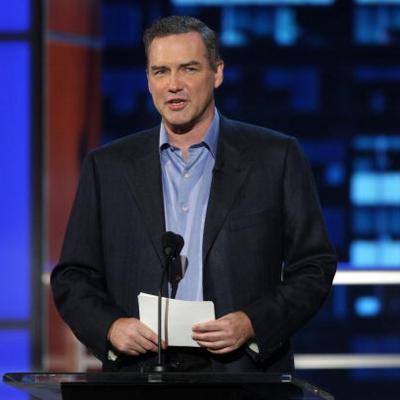What was Curly Howard's Net Worth?
Curly Howard was a comedian and actor who had a net worth of $1 million at the time of his death in 1952. That's the same as around $10 million in today's dollars after adjusting for inflation. Curly Howard is best known as a member of the comedy team the Three Stooges alongside his older brother Moe Howard and Larry Fine. In the group, he was famous for his high-pitched voice, childlike physical comedy, improvisation, and various vocal expressions, such as "nyuk-nyuk-nyuk!" Howard left the Three Stooges following a massive stroke in 1946, and he passed away in 1952 following several more strokes.
Early Life and Education
Curly Howard was born as Jerome Horwitz on October 22, 1903 in the Brooklyn borough of New York City as the youngest of five sons of Jewish parents Jennie and Solomon. He was a quiet child, unlike his brothers Moe and Shemp, and rarely caused his parents grief. However, when he was 12, Howard accidentally shot himself in his left ankle while cleaning a rifle, giving him a limp that he never chose to correct. Although a mediocre student at school, Howard excelled as a basketball player. Ultimately, he did not graduate from high school.
The Three Stooges
In the 1920s, Howard watched as his brothers Moe and Shemp, along with Larry Fine, enjoyed success as a popular vaudeville act with Ted Healy called "Ted Healy's Stooges." Early in the 1930s, Shemp left the act due to Healy's bad temper and alcoholism, and was replaced by the younger Howard, who adopted the stage name Curly. The new lineup of Moe, Curly, and Larry debuted alongside Ted Healy at Cleveland's RKO Palace. Eventually, Healy developed a career as a solo comedian, and left the group. Now known as the Three Stooges, the trio went on to sign with Columbia Pictures, for which they made nearly 200 comedy short films. As part of the group, Curly became known for his high-pitched voice, childlike mannerisms, frequent improvisations, and various vocal expressions, such as "nyuk-nyuk-nyuk!" and "soitenly!"

Getty Images
The Three Stooges made numerous short films that became iconic in the world of comedy. Among them were "Punch Drunks," the only short written entirely by the trio; "Men in Black," the only one to be nominated for an Academy Award; and "Three Little Pigskins," which featured a young Lucille Ball. In the early 1940s, the Three Stooges made such classics as "A Plumbing We Will Go," "Cactus Makes Perfect," and the violent anti-Nazi short "They Stooge to Conga." However, by 1944, Curly Howard's energy was on the decline, and he was unable to perform at the best of his abilities. In early 1945, he was diagnosed with extreme hypertension, obesity, and a retinal hemorrhage. During production on the short "Half-Wits Holiday" in 1946, Howard suffered the latest in a long line of strokes, making the film his final one as an official member of the Three Stooges.
Personal Life and Death
Howard was married a total of four times. He was married to his first wife, Julia Rosenthal, from 1930 until their divorce in 1931. Howard wed his second wife, Elaine Ackerman, in 1937; they had a daughter named Marilyn before divorcing in 1940. During this time, Howard was insecure about his shaved head, and drank and spent money excessively. However, he was still popular with women, and in 1945 married his third wife, Marion Buxbaum, just two weeks after they began dating. The marriage lasted just nine months before ending in a bitter divorce that received sensationalist coverage in the media. Howard wed his fourth and final wife, Valerie Newman, in 1947 during his health decline. They had a daughter named Janie.
Howard's final years were marked by several strokes. After leaving the Three Stooges due to his massive stroke in 1946, he continued to experience declining health, and had a second massive stroke in 1948 that left him partially paralyzed. By 1950, Howard was confined to a wheelchair, and in early 1951 he was put in a nursing home. In the nursing home, he suffered another stroke. Howard soon left to live at the North Hollywood Hospital and Sanitarium. Due to his worsening mental condition, he was eventually relocated to the Baldy View Sanitarium in San Gabriel, where he passed away on January 18, 1952.








